CAVE EXPLORERS
STEVE COX AND BLAKE WILSON SHARE THE THRILL OF FINDING THE CAVE CONNECTION
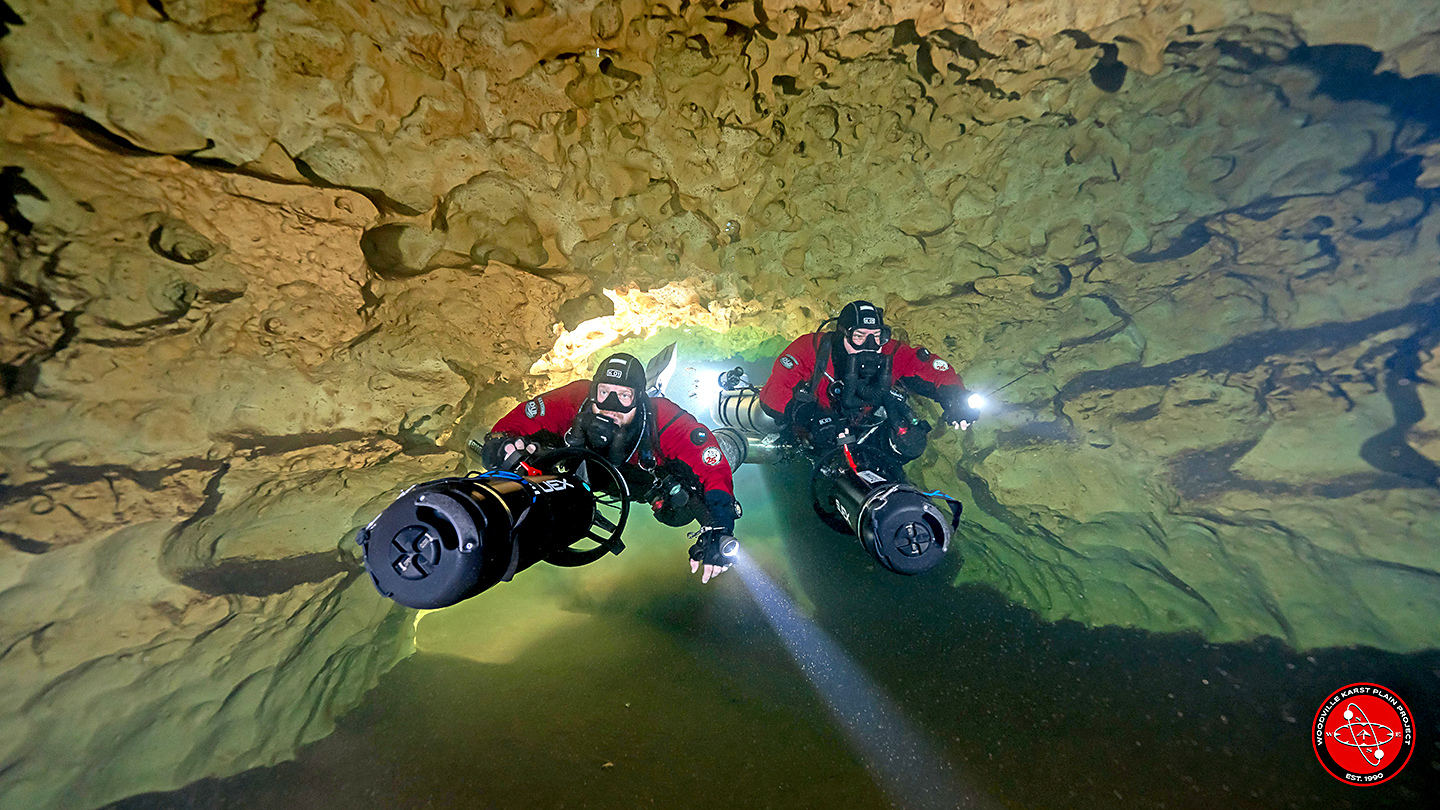
Divers Steve Cox and Blake Wilson in Turner Sink cave system on Saturday, Jan. 14. PHOTO BY LAUREN WILSON/WKPP
By WILLIAM SNOWDEN Editor
On this chilly Saturday morning at Turner Sink, divers Steve Cox and Blake Wilson talked about their excitement of finding the tunnel that links Chip’s Hole, a sinkhole north of Bloxham Cutoff near U.S. Highway 319, with Wakulla Springs.
The two cave explorers with the Woodville Karst Plain Project, which has been exploring and mapping Wakulla’s underground cave system for decades, found a marker left by a previous dive team, confirming the link.
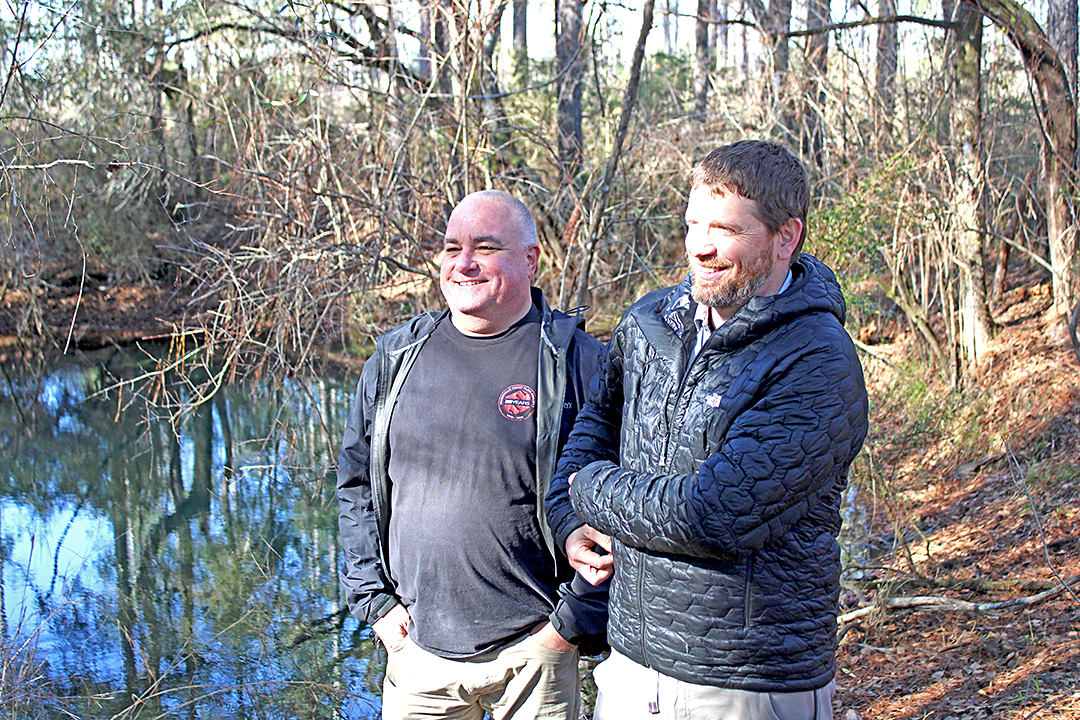
Steve Cox and Blake Wilson being interviewed at Turner Sink.
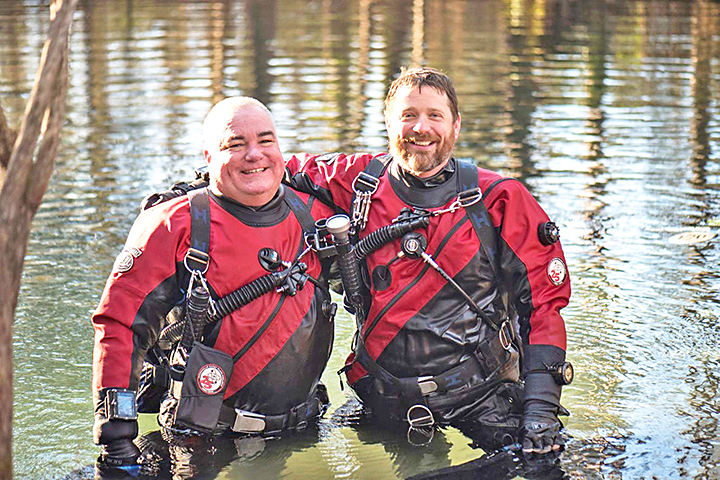
Divers Steve Cox and Blake Wilson after their dive two weeks ago confirming the underground cave connection.
“When I first found it, I didn’t believe it at first,” Cox said. “I thought we had further to go.”
He noted that locating the connection between Chip’s Hole and Wakulla Springs has been a goal for them for 10 years, and for the whole WKPP team for 30 years.
When he realized the discovery, he motioned to Wilson, who began yelling with joy in the cavern. Cox laughed, recounting: “I could hear him yelling!” – underwater in the underground cavern.
When they made it back to the sinkhole, Wilson popped up from the water and told the waiting team member to get her camera, and he went back into the water to finish decompressing. The team member knew something big had happened.
On Saturday, Jan. 14, the two divers were getting ready to dive again in Turner Sink to get photos to document the find, and to plant a radio transmitter to correct an error in the cave system – the current map of the 20,000 foot long tunnel is off about 600 feet. The GPS correction was successful.
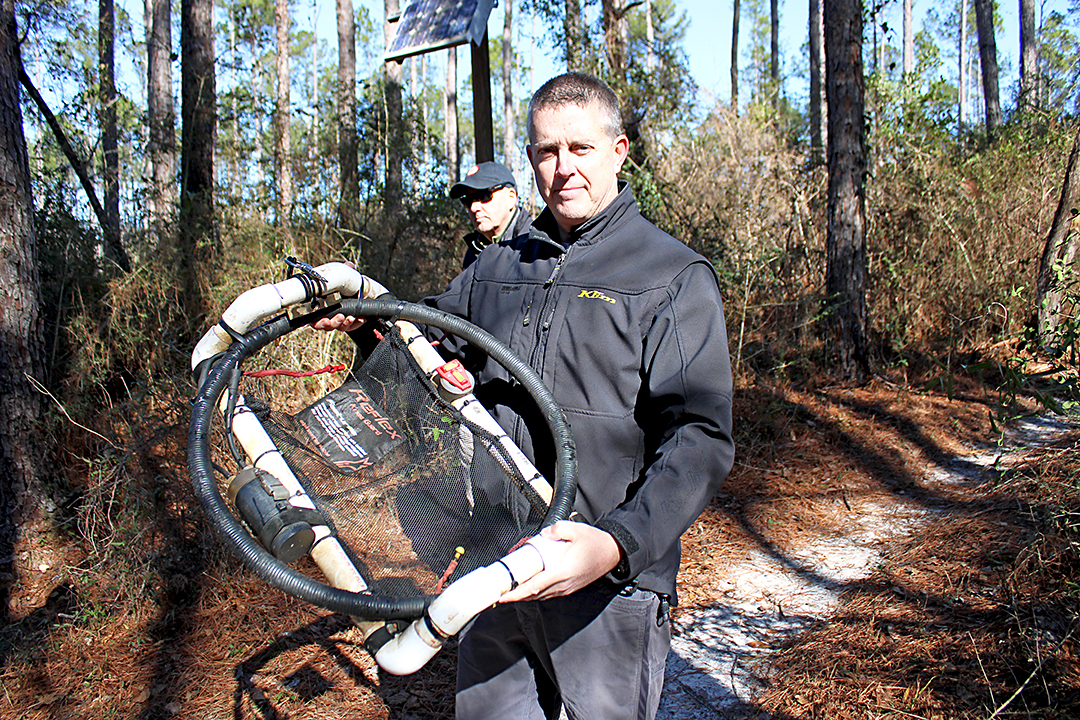
Casey McKinlay with the transmitter divers were placing.
Talking about the underground cave system, the two divers note some of the underground rooms are massive, big enough for a 10 story building, Wilson says.
The cave system headed south from Leon Sinks is huge and deep, they say, while the Chip’s Hole system is smaller and not as deep. The Leon Sinks system is pretty consistent at a depth of around 270 feet, while the Chip’s Hole system varies between 50 and 150 feet.
Which was the issue in trying to locate the connecting tunnel – it wasn’t as deep. The pair, both of whom live in Gainesville, have been diving in Wakulla’s cave every weekend since October – except Christmas and New Year’s – because the dry conditions have left the caverns clear. (Rainy weather brings in tannins from runoff and turn the water dark.)
Casey McKinlay, WKPP project director, noted the success the team had in 2007 linking Leon Sinks system to Wakulla Springs – a cave system 38 miles long with 28 entrances.
The team started on the Chip’s Hole system 12 years ago, and the 7-mile system with two entrances has been added to the map.
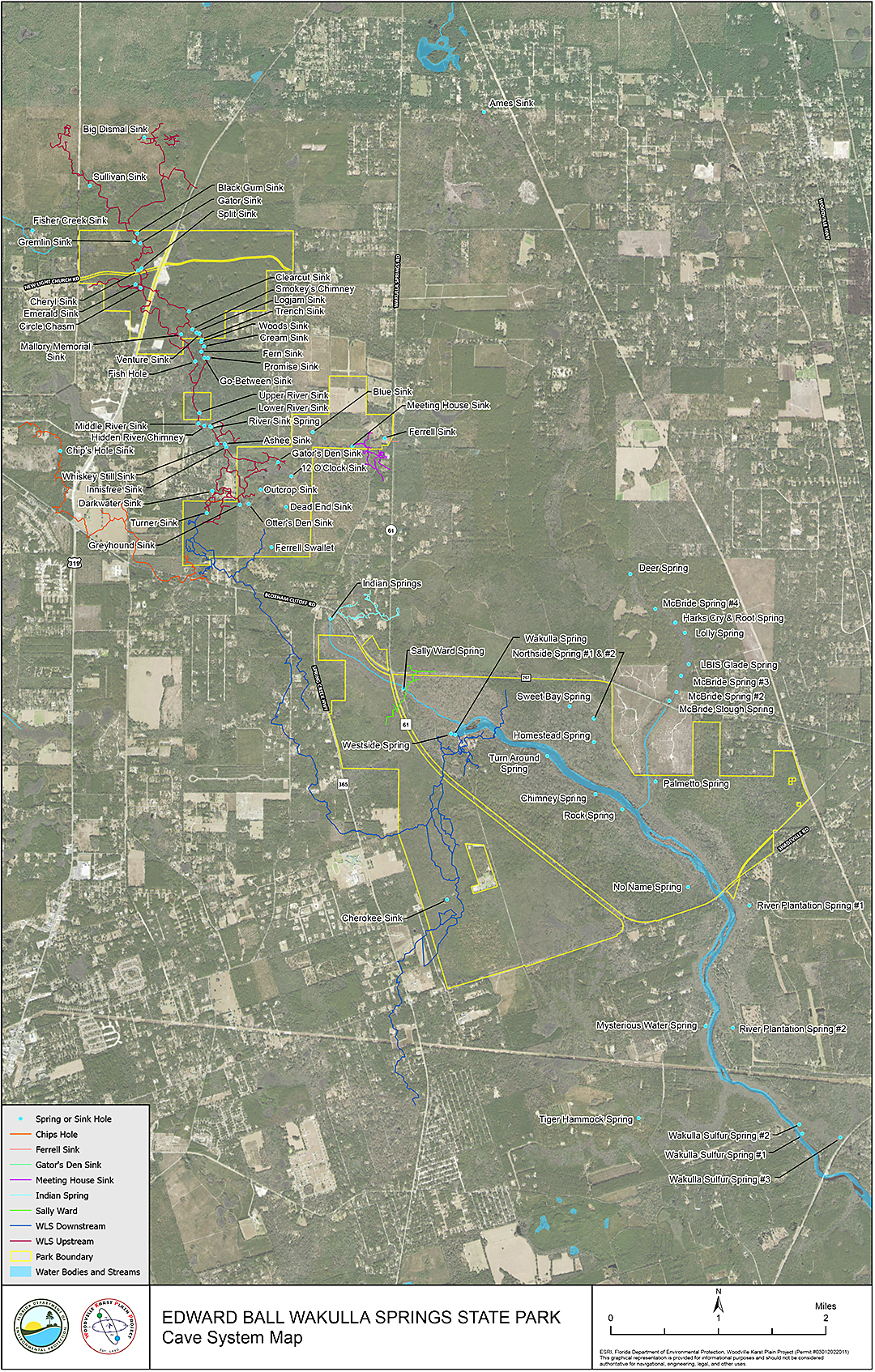
A map of the Wakulla underground cave system prior to the discovery of the Chip’s Hole connection.
Asked about the controversy over the proposal last year to locate a gas station on Bloxham Cutoff over a known cave system that flows to Wakulla Springs, McKinlay says the role of WKPP as scientists and researchers is to provide elected officials with the best data.
He noted that Wakulla County’s GIS (geogrpahic information system) person is in the loop so that WKPP’s mapping of the cave system is available. “Our distribution list keeps expanding,” McKinlay says.
The next issue, McKinlay says, is to look at the possible purchase of the Chip’s Hole land – owned by a private entity – to the state or some governmental agency in order to protect it.





